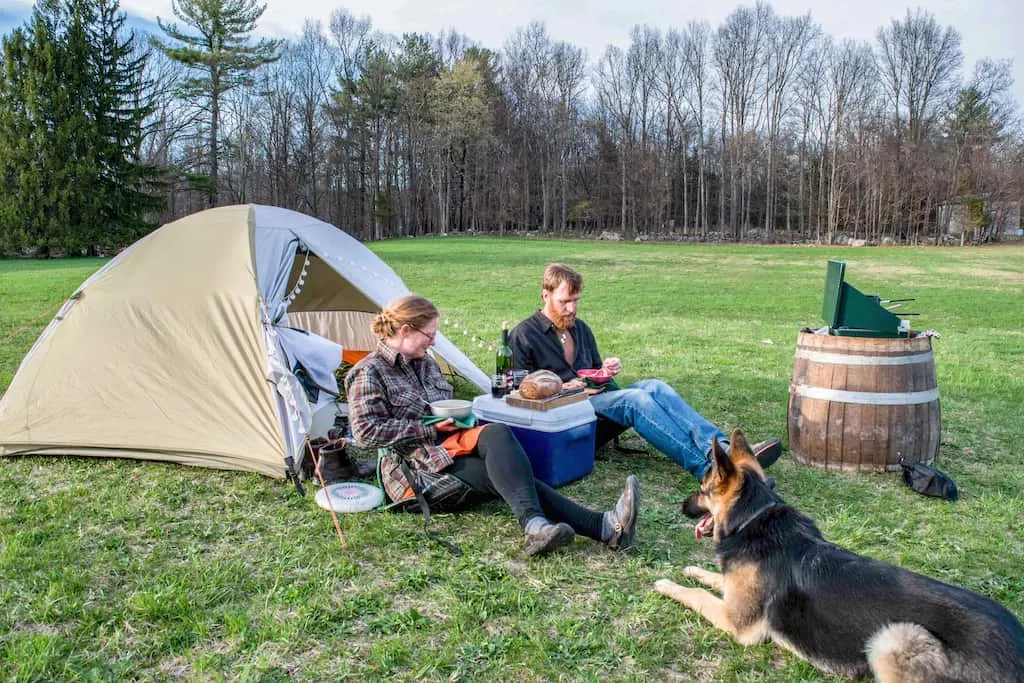Every dog must have its day, and for many dogs, that day includes quality time spent playing outside with their favorite human companions.
Throw in a spectacular mountain lake or a meandering river, and you’ve got yourself an adventure.
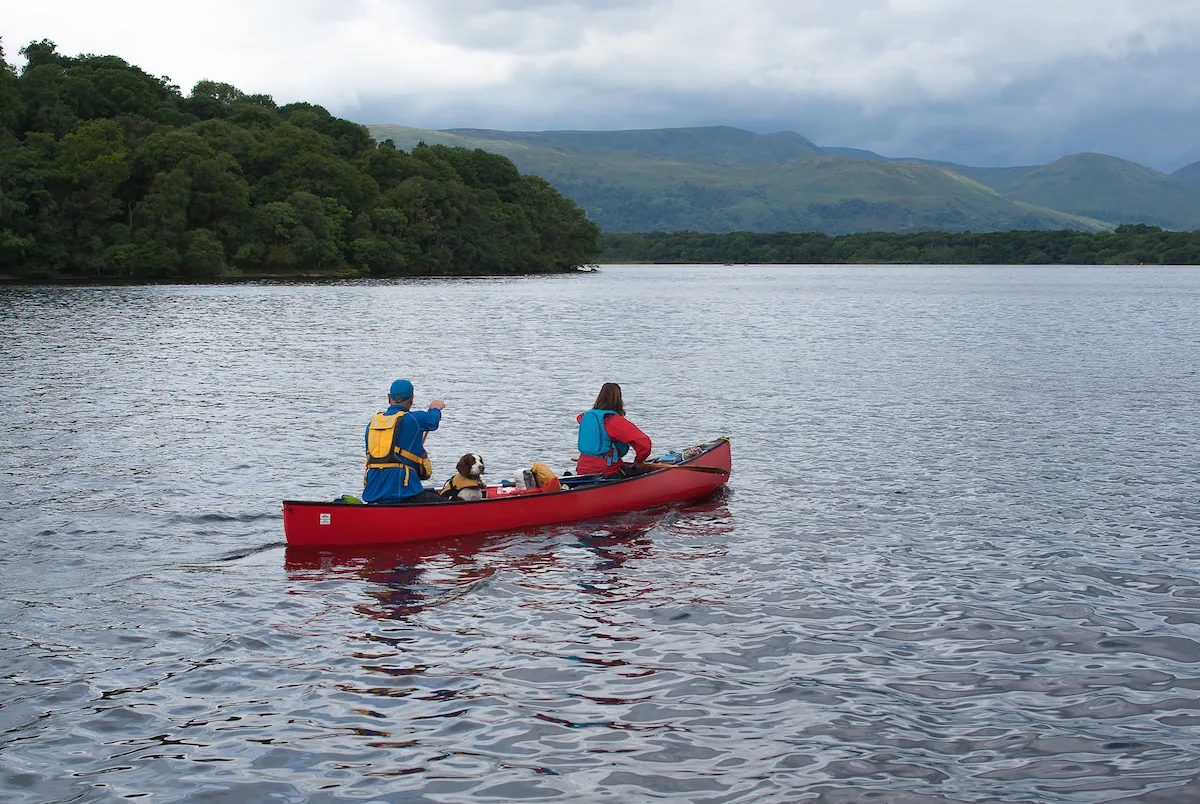
It’s true that not all dogs are comfortable around water, and many more might balk at the idea of canoeing or kayaking, but plenty of adventurous dogs can be convinced to give it a shot.
Let’s take a look at the ins and outs of canoeing and kayaking with dogs.
Is it the ultimate adventure or a disaster waiting to happen? Only one way to find out.
Table of Contents
Can All Dogs Swim? Best Dog Breeds for Getting Out on the Water
Whether or not your dog will get along with boats and water depends on all kinds of factors, including age, temperament, breed, and the environment they’ve been raised.
Just because your dog is a certain breed does not necessarily mean that he or she will or won’t take to the water, but I’d be lying if I said that a dog’s breed didn’t play a role.
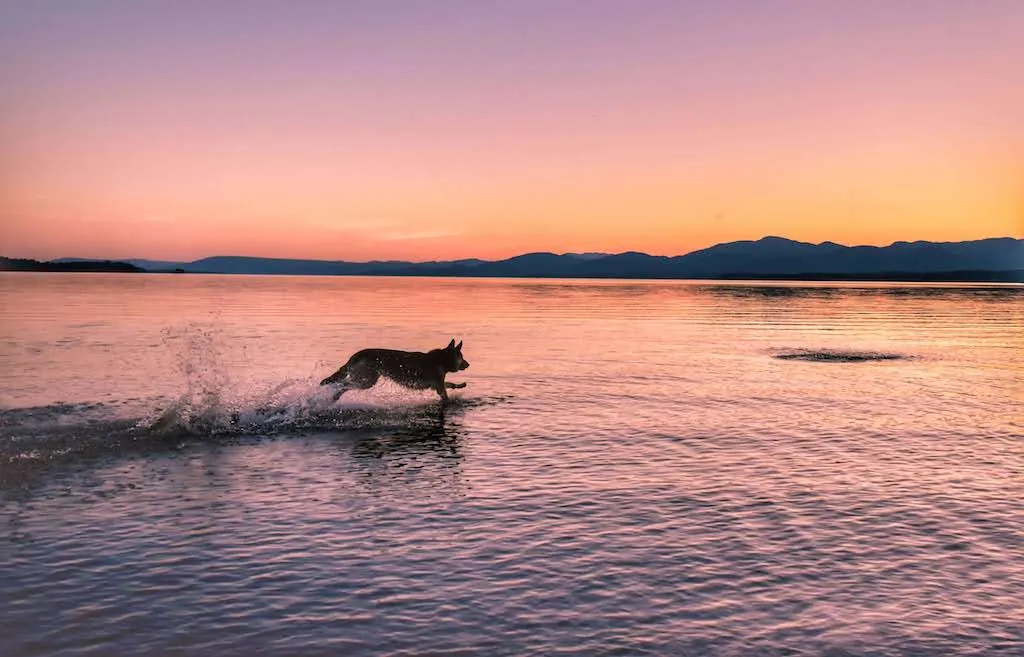
While all dogs instinctively know how to swim, these breeds are said to be lovers of water and the best swimmers.
- Chesapeake Bay Retrievers
- English Setters
- Labrador Retrievers
- Golden Retrievers
- Portuguese Water Dogs
- Newfoundlands
- Brittany Spaniels
- Poodles
- Australian Shepherds
- Irish Water Spaniels
- Irish Setters
Dogs with heavy chests like bulldogs, pugs, boxers, and basset hounds don’t have body shapes designed for swimming, and many other breeds just don’t take to the water readily. For the record, we’ve raised a number of Labradors over the years and several of them did not enjoy the water.
We have an older Labrador that hates swimming and another that we can’t keep out of the water. Both dogs enjoy canoeing with us on the weekends. We’ve also seen boxers, dachshunds, and pugs that love to swim, although some are more awkward than others.
When it comes to kayaking and canoeing with dogs, your dog’s breed is just one factor in the equation.
Before You Begin Kayaking or Canoeing With Your Dog
There’s a process here, and before you even think about paddling with your dog, you should spend some time introducing him or her to the exciting world of lakes and rivers. You’ll learn pretty quickly whether or not your dog takes to the water.
Some dogs will jump right into any lake, river, or puddle they come across, while others will be perfectly content to watch from the shore. Either of these scenarios is fine. What you don’t want is a dog that is anxious or fearful.
If your dog is anxious around the water, you will have to take the next steps very slowly. Your end goal before putting your dog in a boat will be to help him enjoy being near the water, on the water, and in the water.
Helping Your Dog Fall in Love with Swimming
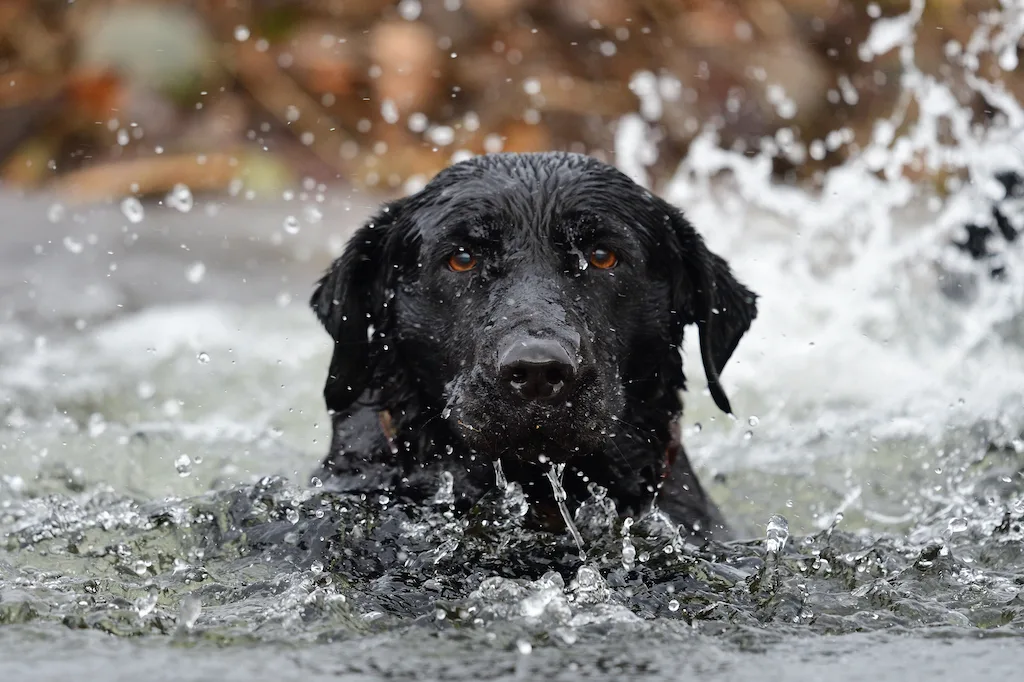
The method you use to introduce your dog to lakes and rivers will depend on your dog’s comfort level. Here are a few tips to make the process go smoothly — the first step toward paddling together!
Borrow some water-loving dog friends that will show your dog the ropes. Their enthusiasm may just be contagious and help your dog to see that water play can be fun.
Bring your dog to shallow lakes and ponds before tackling streams and rivers. Walk along the shore. Have a picnic. Take off your shoes and wade in the shallows.
Bring along your dog’s favorite ball, toy, or disc and toss it a few feet into the water. If your dog is a natural fetcher, he probably won’t hesitate to go in after it. Be prepared to fetch it yourself if your dog can’t be convinced to retrieve it.
Go swimming! Seeing you and your family frolicking in the water may be all the incentive your dog needs to get his toes wet.
Do not push, pull, or throw your dog in the water. This will not help, and it may make your dog even more fearful of the water.
Also Read: The Complete Guide to Snowshoeing and Skiing with Dogs
Canoe vs Kayak for Paddling with Dogs
Whether you choose to paddle with your dog in a canoe or a kayak will probably be determined by the paddling you most enjoy, the size of your dog, and who you go out on the water with.
If you are new to the sport, we recommend renting a kayak and a canoe to see what you like best before making a purchase.
The Lowdown on Canoeing with Dogs
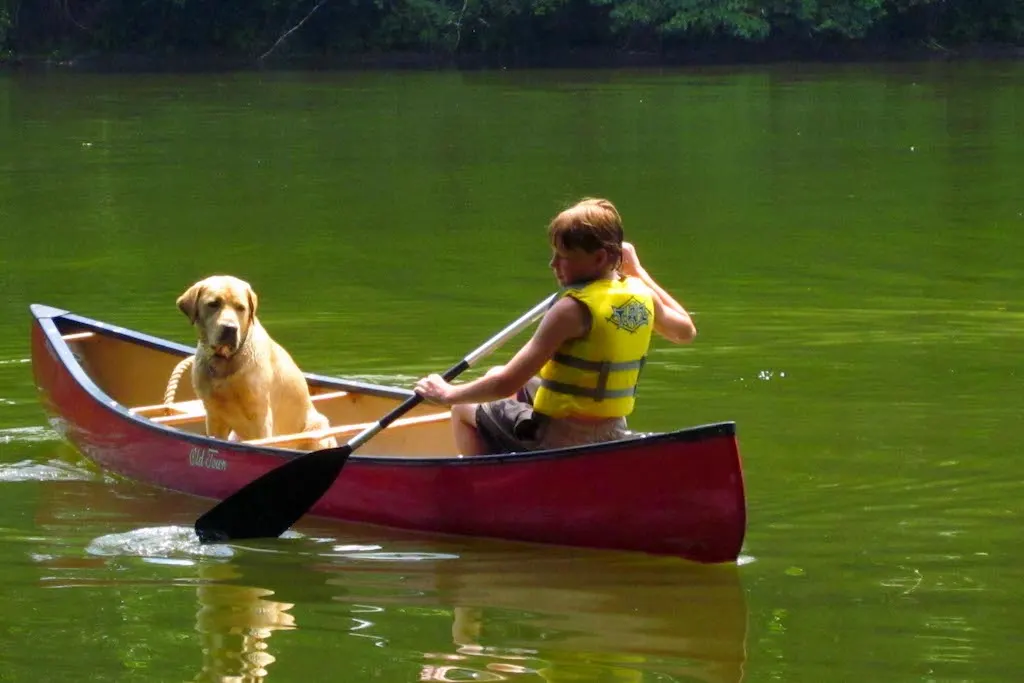
We have canoed and kayaked with our dogs extensively. When my husband and I paddle together, we almost always choose to take our canoe.
It’s a whitewater canoe, and we use it to paddle on slow-moving rivers (probably up to Class II), ponds, and lakes.
Here’s why we choose to canoe with our dogs most of the time:
My husband and I almost always get out on the water together. And we have a wonderful two-person canoe.
We have two 60+ pound Labradors. They can both sit comfortably in the middle of the canoe.
We often have a lot of gear. A cooler. Swimsuits and towels. Books. A guitar. Camera equipment. Yeah, we like to make a leisurely day of our time on the water.
Canoes are wide open and dogs can ride in the middle or on either end, plus you have extra space for your gear. If you do a lot of paddling with a partner, then a canoe is an obvious choice.
Solo canoes would be fun too, but I don’t have any experience with them, so I won’t try and give advice here.
The Lowdown on Kayaking with Dogs
Kayaks, on the other hand, are great for quick outings. They are versatile and easy to maneuver. Here are some reasons why kayaking with your dog may make more sense.
A kayak is easy for one person to handle.
Kayaks are great for small and medium dogs.
Sit-on-top kayaks are stable, easy for your dog to get onto, and wide enough for large dogs.
I’ve spent many an afternoon kayaking with an 80-pound Labrador in my lap — lucky for me, he was super mellow and curled right up between my legs. I wouldn’t do it for hours on end, but it wasn’t too bad.
Where Does a Dog Sit on a Kayak?
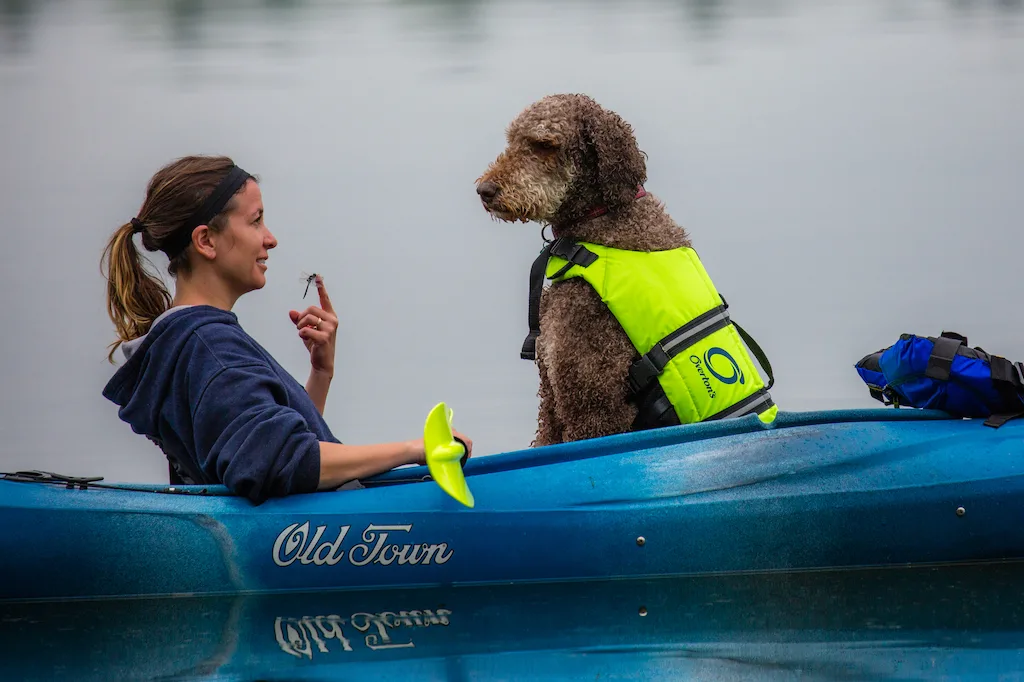
The short answer is wherever it is most comfortable for you and your dog, but honestly, most dogs that I see riding around in kayaks sit just in front of the paddler. This is how we do it and it works well, even with larger dogs.
Best Kayaks for Dogs
When deciding on the best kayak for you and your dog, there are a few things you’ll want to take into consideration.
Sit-on-Top vs Sit-Inside Kayaks for Dogs
There are lots of advantages to using a sit-on-top kayak when paddling with a dog. Sit-on-tops are easy for your dog to get on and off. They are wider than sit-inside kayaks, which means they will be more stable if your dog starts moving around, and they provide your dog with more room.
Sit-on-top kayaks have drain bungs so if your dog hops on dripping half the lake, you can rest assured that the water will easily go back where it belongs.
The other nice thing is that if you have a dog like our Malinda who likes to jump out of the boat, it’s easy to lift them back in (tip: get a life jacket with a sturdy handle).
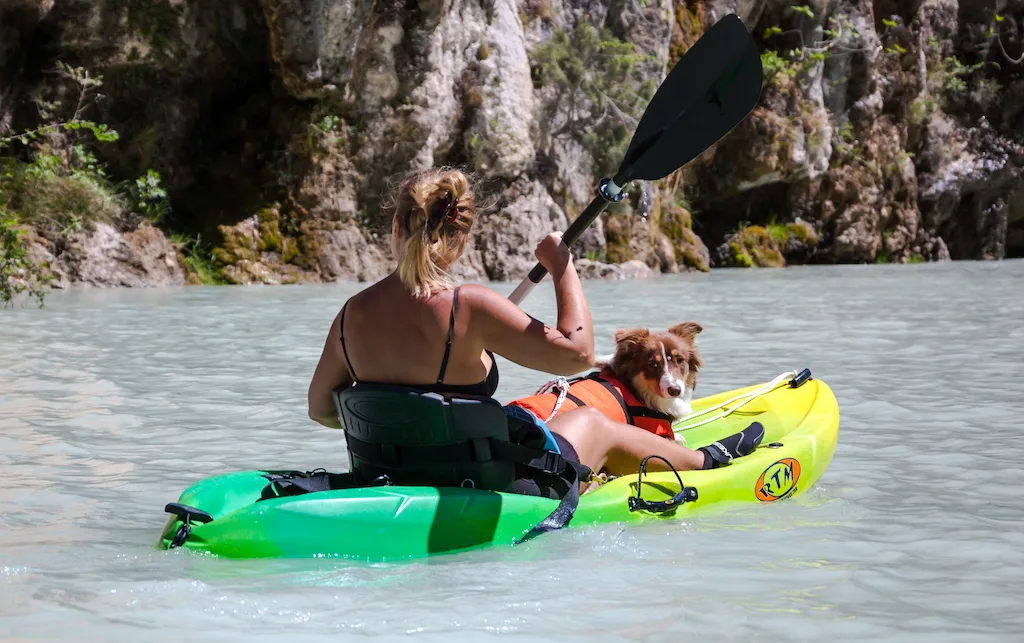
Sit-inside kayaks are great for smaller dogs, dogs who are nervous, or dogs who benefit from the added security of your closeness. My only caution would make sure that if you tip or have to exit the boat, you and your dog can safely do so.
A sit-on-top works really well for our older dog, but our younger dog can not resist jumping in the water from a sit-on-top. We’ve got some training to do!
A two-person kayak is another option for paddling with dogs — then you have a place for yourself and a separate spot for your dog. Now if we could only teach them how to paddle the boat, we’d be all set.
Also Read: The Complete Guide to Road Tripping with Dogs
Special Gear for Canoeing and Kayaking with Dogs
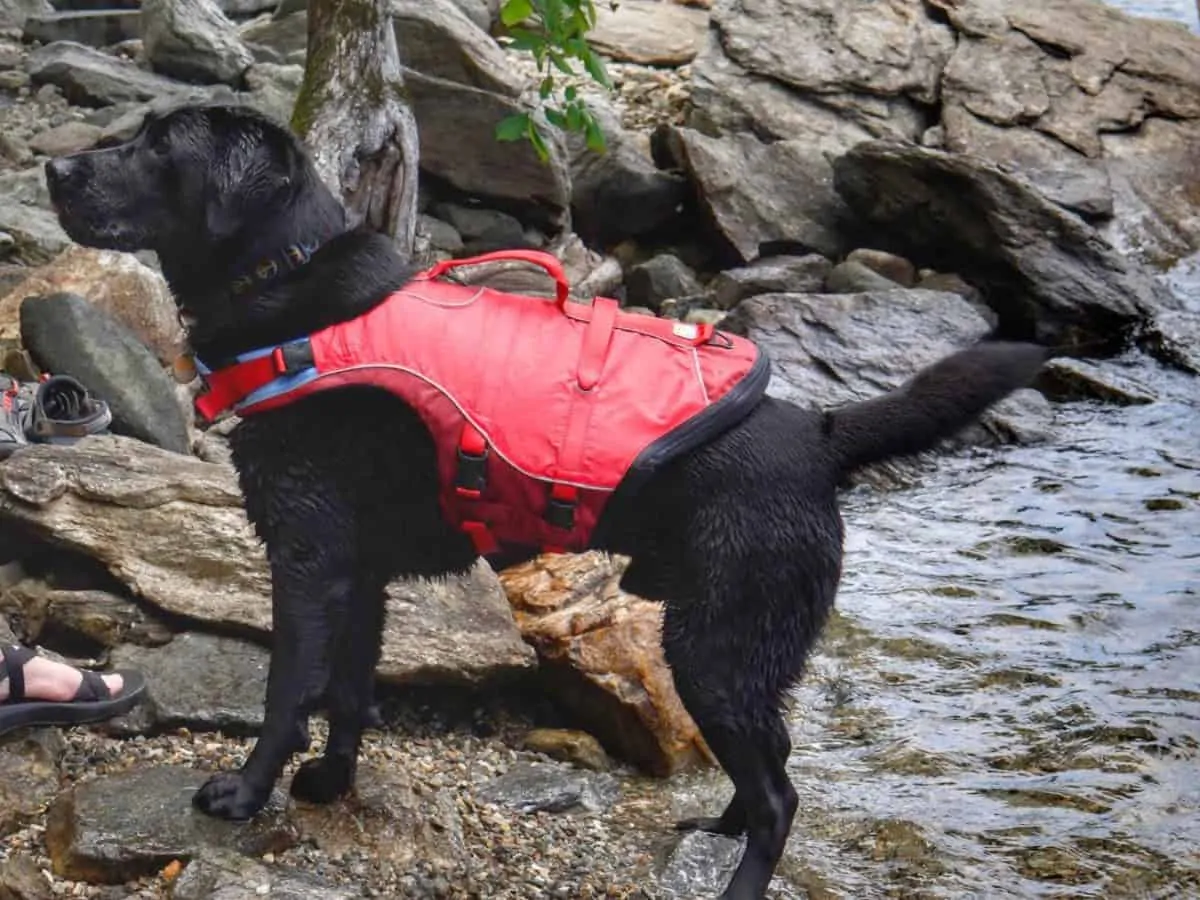
Before you head out in a kayak or canoe with your dog, be sure to pack some essentials to keep you and your dog happy, healthy, and comfortable. Here’s what to pack for an afternoon on the water.
Life jackets for you and your dog: It doesn’t matter how well your dog can swim — unless you are paddling on a small pond right near the shore, you should outfit your dog with a proper life jacket. Yes, they’re a life-saving tool, but they also help reluctant dog swimmers feel more confident. The life jacket should fit nice and snug and should also have a handle on top so you can grab your pup if he goes overboard. We love the Ruffwear Float Coat for dogs because it is durable, dries fast, and comes in bright colors so our pup is easy to spot in the water. It’s 100% worth the expense as ours has lasted for 6 years with heavy use so far.
A dry bag. Important for all paddlers, but especially important when canoeing and kayaking with dogs. Even if you keep the boat upright like a champ, you don’t want a wet dog shaking all over your towels and snacks. Keep your gear in a dry bag and tie it down in case you do capsize.
Treats. We use treats as rewards with our dogs when we are working on new and old skills, even out on the water. Training with high-value treats works especially well with Labradors or other food-motivated pups.
Bones or chew toys. We love surprising our dog with a special bone during long paddles. It buys us extra paddling time and promotes serious tail wagging.
An old towel. A towel makes a great make-shift bed in the canoe, and you’ll need it to towel off your dog before putting him in the car.
A non-skid mat. We have a senior dog and one with elbow dysplasia, and keeping them safe when they jump in and out of the canoe is paramount. We have a non-skid mat that goes in the bottom of the canoe to keep the pups from sliding around.
A leash. Unless your dog is perfectly trained to respond to your voice commands, you’ll need a leash, at least for the on-land portion of your trip. While we use a leather leash for most purposes, we like biothane leashes for paddling because they are waterproof and don’t smell when they get wet.
First aid kit. In addition to a standard human first-aid kit, you should also carry waterproof Vet Wrap tape made especially for dogs, an allergy medication like Benadryl for bites and stings, and a vet-prescribed pain killer like Rimadyl for emergencies.
Start on Dry Land: Teaching Your Dog How to Ride in a Canoe or Kayak
If your dog is new to paddling, spend a bit of time introducing him to your boat on dry land. Use treats to teach him to hop in and out, and then go over some basic obedience commands inside the boat. When your dog can reliably sit, stay, and lie down in your kayak or canoe, you’ll be ready for your maiden voyage. If your dog is leery of the watercraft on land, try sweetening the pot by feeding him his meals, bones, or special treats in the boat.
Launching a Canoe or Kayak with Your Dog
By now your dog is used to the water and used to your boat. It’s time to put it all together to embark on a paddling adventure. Bring a dog-loving friend and make sure your pup is wearing his life jacket before you head out.
Get your boat and gear into the water and floating, ideally a few inches from shore. Ask your dog to load into the boat and sit. This is definitely where training comes in! Use treats and encourage meant and ask your dog to stay while you launch your boat and hop in.
If you are canoeing with a human partner, it’s a bit easier, as one person can sit in the canoe with the dog while the other person pushes off and hops in.
Keeping Your Dog Safe in a Kayak or Canoe
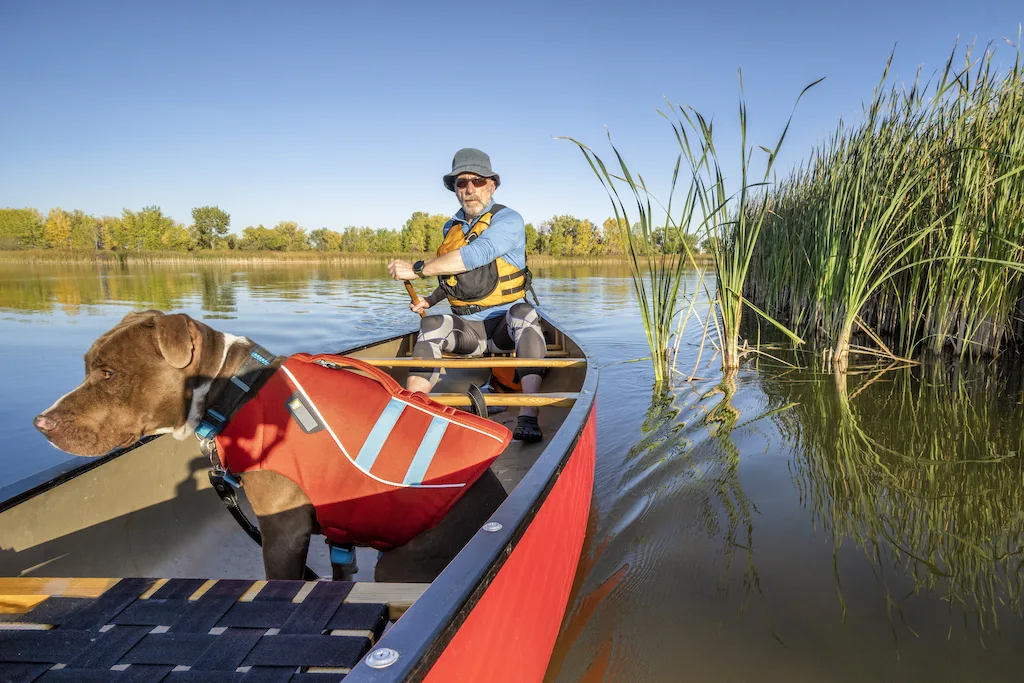
Until your dog is a pro at riding in your canoe or kayak, it’s a good idea to paddle with another human being.
Once you’re out on the water, most dogs will settle right into their role as captain and watchdog. If your dog shows signs of fear or severe anxiety that last more than a few minutes, return to dry land and continue practicing loading and unloading.
Here are a few more tips for safely kayaking or canoeing with dogs:
Positive reinforcement works. As you get into a rhythm, be sure to reward your dog for calm behavior, and don’t forget to stay calm yourself — showing sudden excitement might encourage your dog to pace, bark, or look for a way to exit the boat.
Keep an eye on the weather. Your dog won’t like paddling in rough seas and rain any more than you will, at least at the beginning.
Don’t leash your dog in the boat. This could be dangerous if you capsize, and your dog has to swim to shore.
If your dog jumps out of the boat… Don’t get mad. It happens. Simply paddle to the nearest shore and collect your pup. Basic training comes in really handy here.
More Tips for Kayaking and Canoeing with Dogs
In all honesty, there are as many ways to canoe and kayak with dogs as there are breeds of dogs, and my advice will only get you so far. You’re going to find a system that works for you and your pup, or your dog is going to end up staying home.
Here are a few last tips to make things easier for you and your dog as you navigate the transition from land to water.
Make frequent stops. You may be getting a nice upper-body workout in your kayak or canoe, but your dog won’t get much exercise when you’re paddling. Be sure to give him some shore time every hour or so, and he’ll learn to love those paddling excursions as much as you do.
Start with shallow, placid water. At least until your dog is a regular wave runner.
Keep a bowl and fresh water on hand. This is especially important if you’re paddling in salt water or if you have a small dog who can’t reach over the side of your boat for a drink.
Keep your craft balanced. If you want to put your dog in the widest center section of a canoe, pack some gear to one side so your dog is forced to sit on the other side. This can prevent your dog from going back and forth and rocking the boat.
If you’re anything like me, you’ll find that almost every outdoor activity is more fun with a canine companion.
Dogs love adventure, they rarely complain, and most importantly — they just want to be by your side. Take the time to teach your dog to swim, float, and ride the waves, and you’ll be rewarded with a partner who will enthusiastically share in all of your crazy adventures.
Do you go kayaking or canoeing with dogs? Please share your tips, questions, and comments below. I’d love to hear from you!
Follow us on social media for more dog-friendly adventures
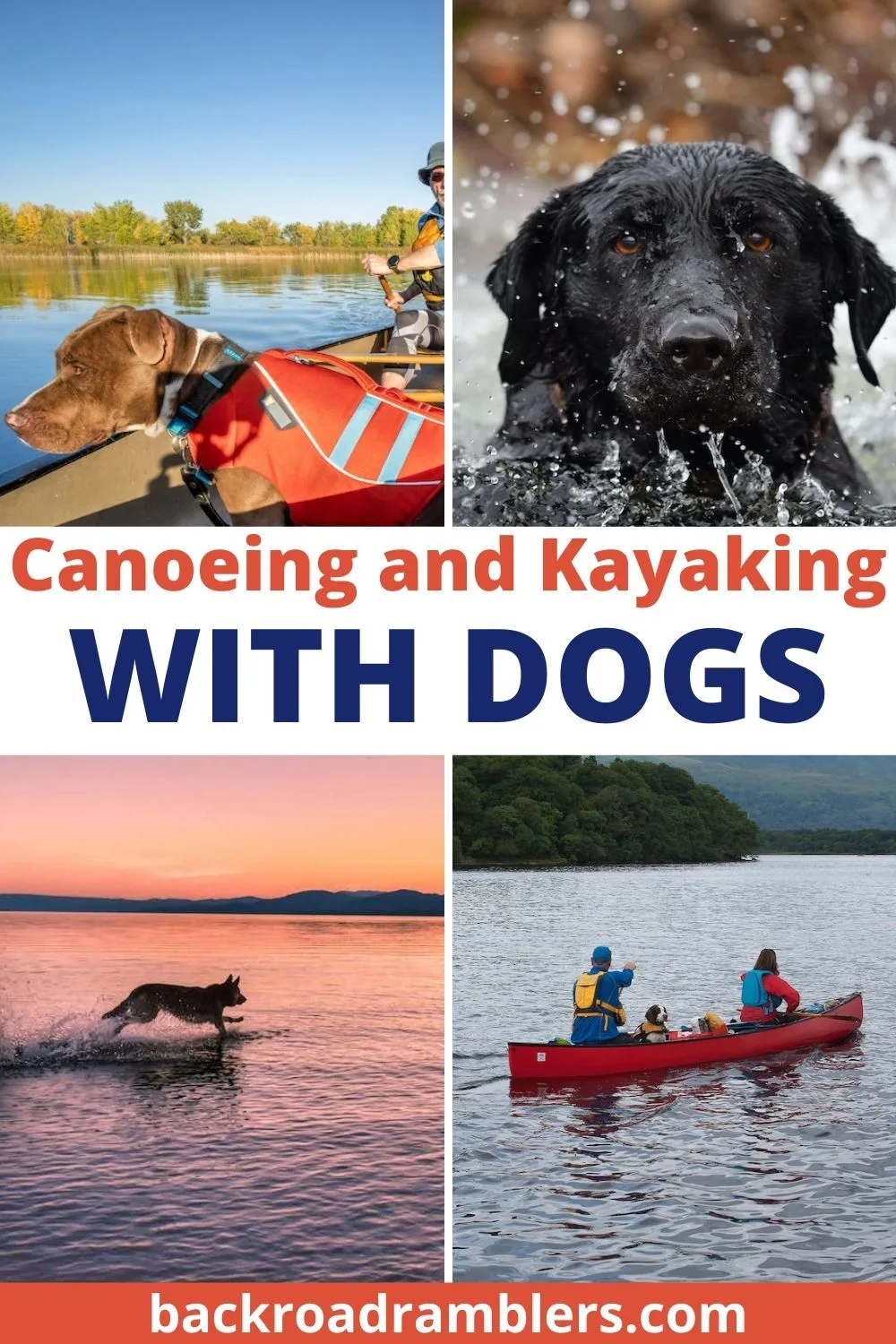
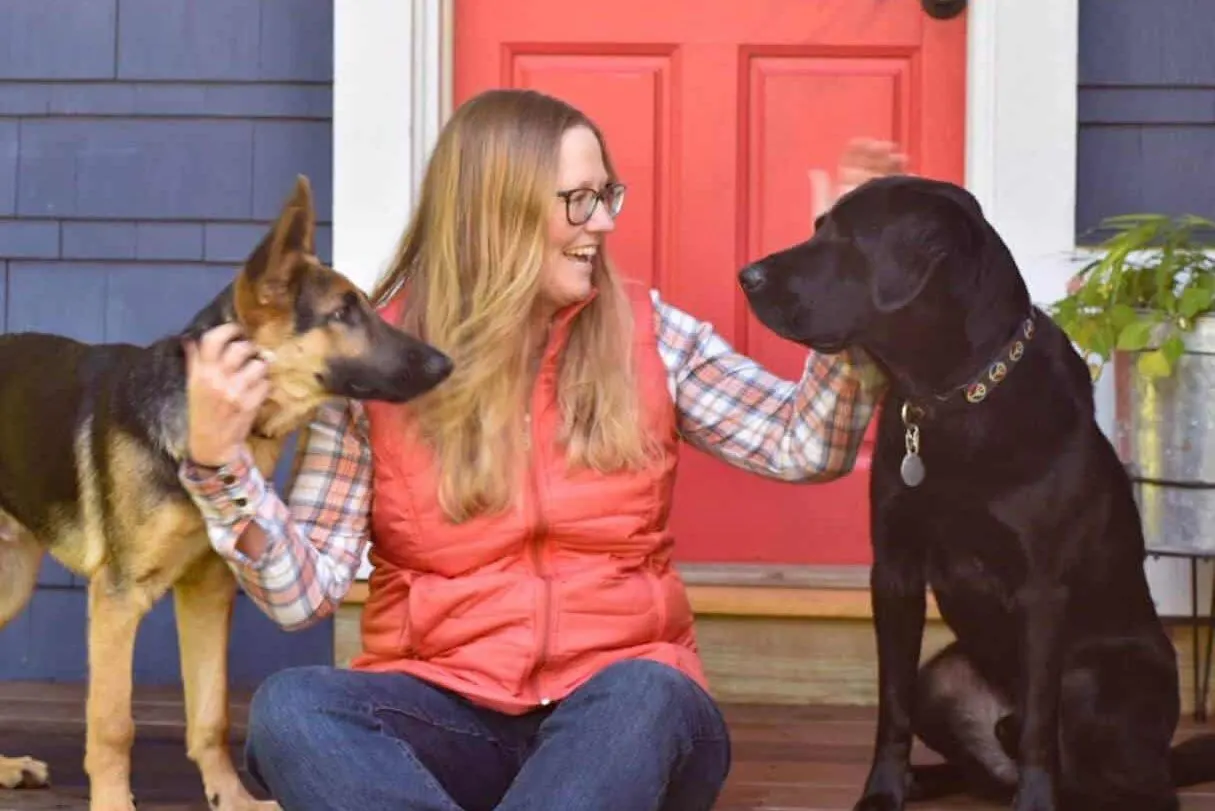
Tara is a freelance writer and travel blogger with a passion for outdoor adventures. She is the co-author of AMC’s Best Day Hikes in Vermont and currently blogs at Back Road Ramblers and Vermont Explored, where she shares travel tips, adventure destinations, and vacation ideas for the wanderer in everyone.

